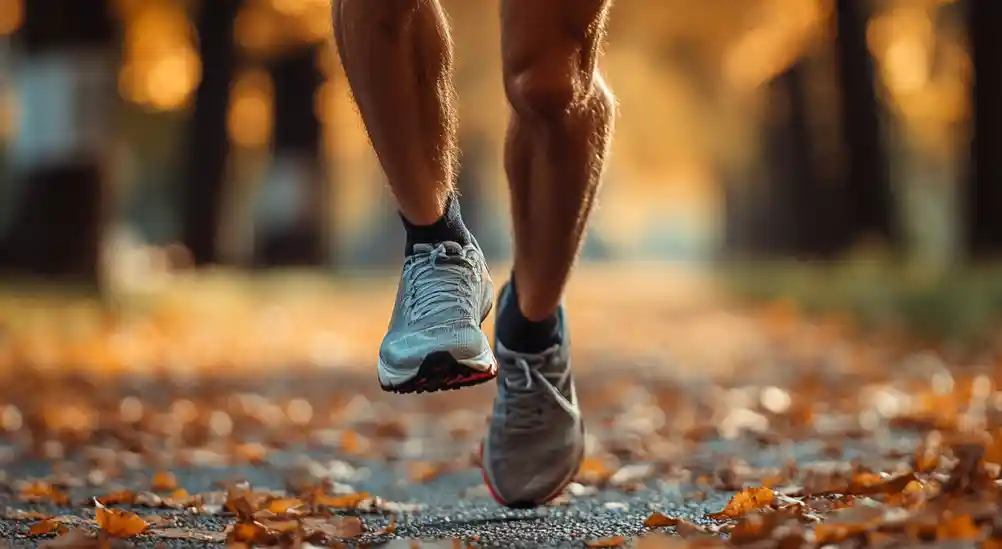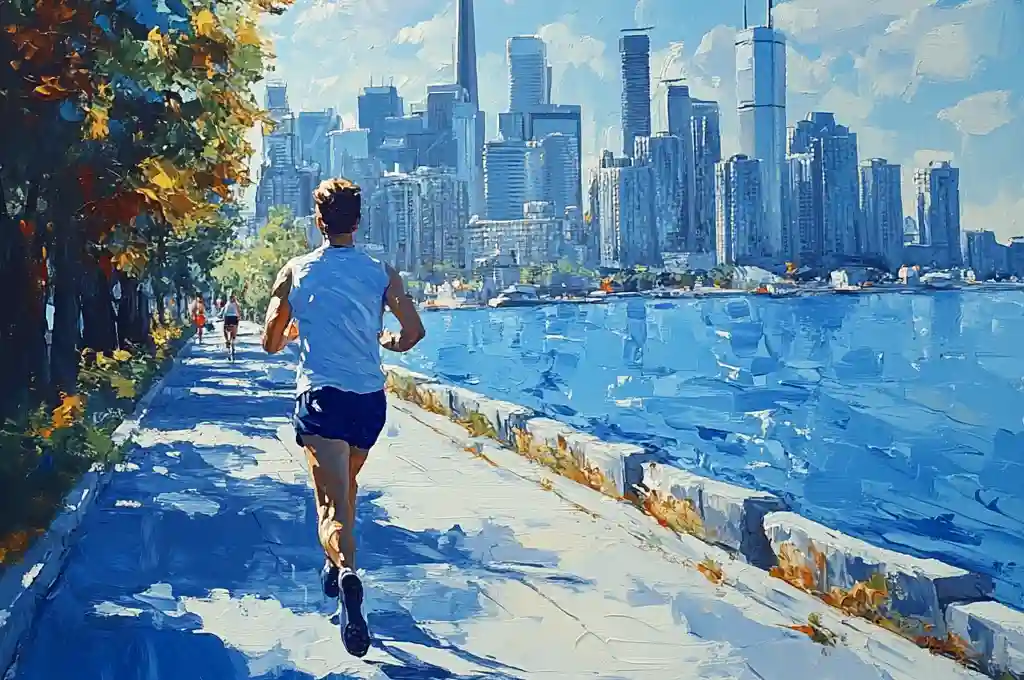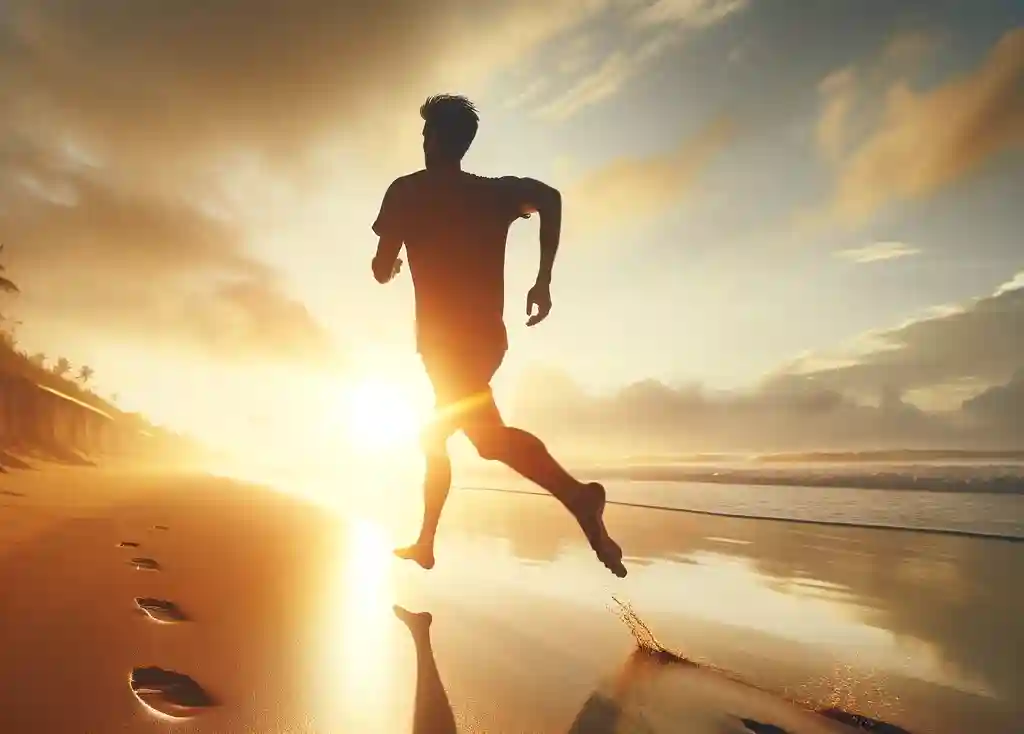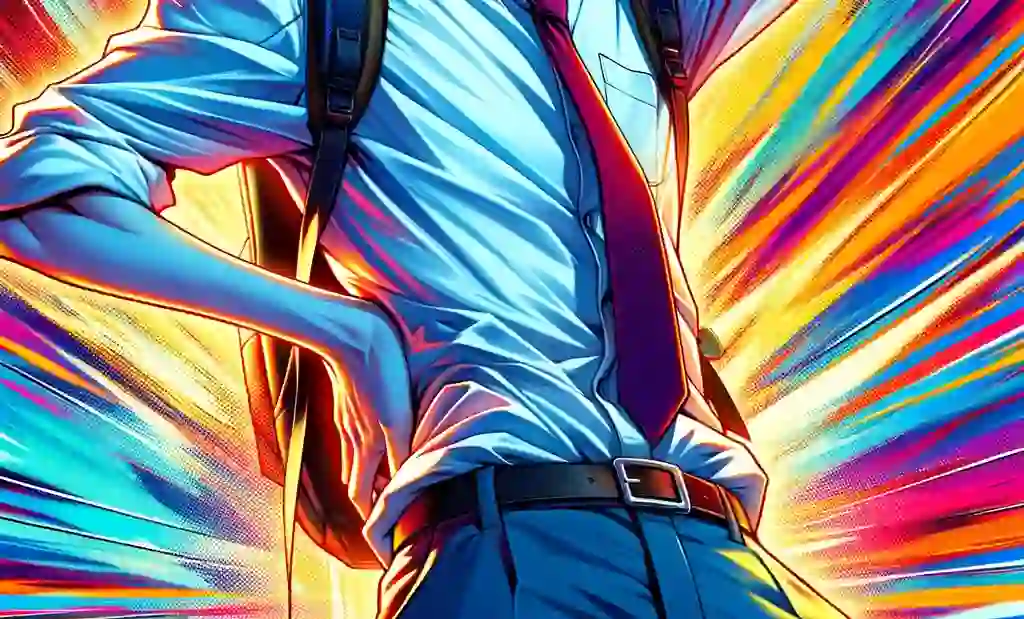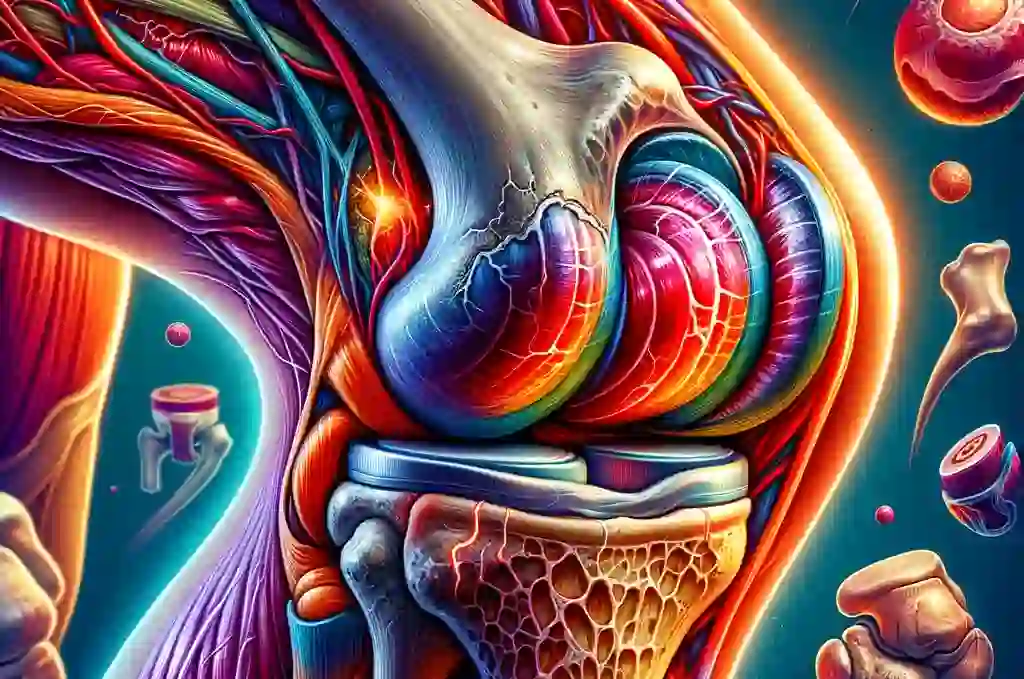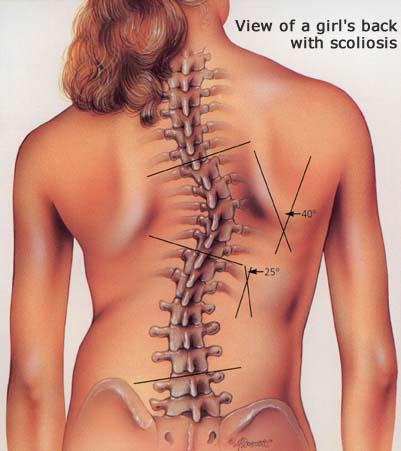Keep the Bunion Surgeon Away With These Bunion Tips
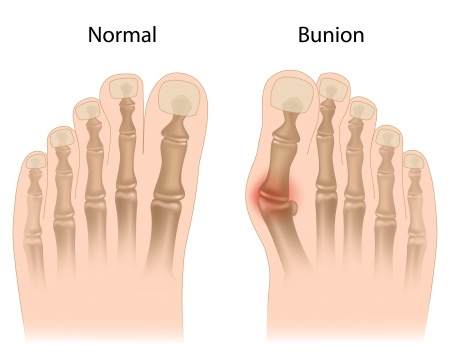
Struggling with bunions can be both painful and frustrating, particularly as they worsen over time, potentially leading to surgery. This guide aims to offer key insights into managing and possibly improving your bunion condition, aiming to delay or eliminate the need for surgical intervention.
Understanding Bunions: A Gradual Development
Bunions might seem to appear suddenly, but they typically develop slowly over many years. Often, they don’t cause pain initially, making their gradual progression easy to overlook.
What Exactly is a Bunion?
A bunion occurs when your big toe, medically referred to as the hallux, deviates from its normal position, angling toward the other toes. This misalignment stretches the ligaments and tendons around the big toe joint, leading to inflammation, discomfort, and pain. Over time, untreated bunions can worsen, significantly impacting your ability to walk comfortably.
Preventative and Maintenance Strategies
The good news is that with timely intervention, especially during the intermediate stages of bunion development, it’s possible to manage and maintain your current condition. For those in the early stages, certain exercises may even correct the issue to some extent.
Key Approaches to Managing Bunions:
- Early Detection: Recognizing the signs of bunions early can lead to more effective management strategies.
- Exercise and Stretching: Specific exercises designed to strengthen the foot and toe muscles can help in maintaining or possibly improving the condition of bunions.
- Proper Footwear: Choosing shoes with ample toe room can alleviate pressure on the bunions and prevent further aggravation.
- Orthotic Supports: Custom orthotics prescribed by chiropractors can help in redistributing pressure evenly across the foot, offering relief and slowing the progression of bunions.
Managing bunions effectively requires a proactive approach focused on alleviating pressure on the affected joint, strengthening foot muscles, and adopting footwear that supports foot health. While bunions develop slowly, early and consistent care can significantly impact your comfort and mobility, potentially keeping surgery at bay.
What’s The Cause of My Bunions?
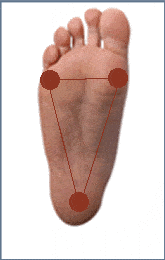
Bunions are more than just a bump on the foot; they represent a change in the framework of the front part of the foot. This change often involves the big toe, or hallux, deviating towards the other toes, leading to a misaligned joint position. This misalignment can stretch ligaments and tendons, causing inflammation and discomfort.
Forefoot Varus and Bunions
Walking on the outer edge of your foot can lead to an unusual stance where only the heel and the little toe’s joint make substantial contact with the ground. This position, known as forefoot varus, elevates the big toe higher than its normal position, potentially delaying its contact with the ground during walking. Normally, a balanced force from muscles, specifically the abductor hallucis and the adductor hallucis, controls the sideways movement of the big toe.
- ABductor Hallucis pulls the big toe away from the other toes.
- ADDuctor Hallucis draws the big toe towards the other toes.
When the big toe fails to make timely ground contact, an imbalance between these two muscles occurs, typically leading the adductor hallucis to overpower and pull the big toe towards the other toes. This imbalance is a critical factor in bunion formation.
The Role of Muscle Imbalance in Bunion Formation
The improper positioning of the big toe affects the foot’s structural integrity, particularly the formation of the foot’s arches. The adductor hallucis plays a role in forming two of the three arches in the foot. Over time, the muscle imbalance caused by delayed big toe contact can lead to the flattening of these arches, exacerbating bunion development.
Managing and Preventing Bunions
Understanding the underlying causes of bunions is the first step in effective management. For those with early-stage bunions or individuals aiming to prevent bunion formation, addressing the muscle imbalance through targeted exercises can be beneficial. Strengthening and stretching exercises that focus on the foot’s muscles can help restore balance and potentially slow the progression of bunions.
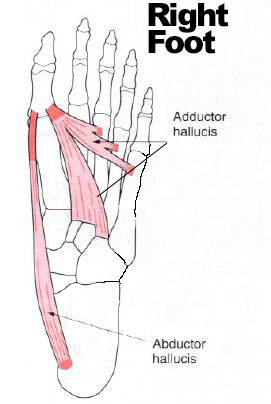
Stages Of Bunion
- Stage 1: The bunion is just a little bump with no pain whatsoever. The toe has moved up to 20 degrees from where it should be. Most people ignore this stage.
- Stage 2: The hallux or big toe is starting to drift toward the 2nd toe. The hallux is now between 20-30 degrees out of normal alignment. There is usually occasional pain.
- Stage 3: The hallux has drifted further and is now touching the 2nd toe. The hallux is now between 30-50 degrees out of position. Most people have enough pain that they cannot do some of their favourite activities like walking.
- Stage 4: The hallux is now underneath the 2nd toe causing a severe deformity. The hallux is 50+ degrees out of position. Surgery is usually the only solution at this point.
What Can I Do To Help My Bunion?
Strengthen your Abductor Hallucis and Loosen Your Adductor Hallucis
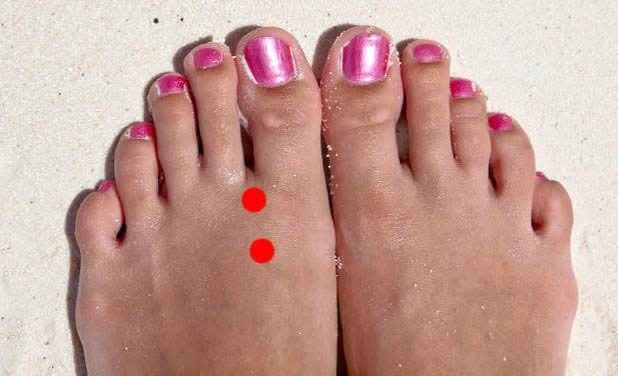
Your big toe is moving towards your other toes so you want to stop this.
So you need to:
- Strengthen the abductor hallucis. This muscle pulls the big toe away from the other toes
- Loosen the adductor hallucis. This muscle pulls the big toe toward the other toes
#1 Stretch The Adductor Hallucis
- Find the tender points between your 1st and 2nd toe (adductor hallucis).
- Pinch all tender points one at a time with your hand until you feel a deep ache.
- At the same time, move your big toe away from the other toes. This stretches the adductor hallucis.
- Do this for 3 minutes.
#2 Standing: Strengthening The Abductor Hallucis
- Stand barefoot with your big toe lined up beside a marker, like the dividing line between pieces of hardwood, on the floor.
- Bring your big toe away from other toes. Toward the marker.
- Do 3 sets of 10 five times a day.
#3 Strengthen Your Arches
- While Standing put weight on the three points of your foot. Heel, big toe joint, and little toe joint.
- You should be able to put a pen underneath. Hold for 30 seconds
Intermediate:
- Lift one leg while doing the same exercise. Make sure you are near a wall or table to hold yourself up if you lose your balance.
Advanced:
- Lift up one leg and do a squat while doing the same exercise. Warning you must have good stability to even attempt this. Those with stages 3 and 4 bunion should not attempt this exercise.
#4 Strengthen Your Arches with Heel Raises
You can do heel raises if your bunion is not painful. You can do this on the floor by doing 3 sets of 20.
Advanced: Do heel raises on the edge of the stairs with just the forefoot on the stairs. Again you should not do this if you have any balance issues or your bunion is more advanced.
#5 Strengthen Your Foot Muscles By Going Barefoot
Dr. Niremberg a podiatrist says 3 Things[1]
- Shoes weaken bones in our feet as less pressure is put on the bones. Going barefoot puts more pressure on the bones so the bones adapt by getting bigger and stronger
- Shoes change the normal motion of our feet. Supportive shoes allow the muscles in the foot to relax. Since we don’t use them the muscles relax and the feet become flat or pronated.
- Shoes deform our feet. [2] A study showed kids that who did not wear shoes had almost 3 times fewer flat feet than kids who did wear shoes.
Walking barefoot, especially over uneven surfaces strengthens the muscles in your foot allowing your foot to work like nature intended. Walking on sand is even better.
Should I Go Bare Foot then?
I would encourage it for many but, in the later stages of having your bunion, the change in the shape of the bones and inflammation of the joint at the bunion makes it too painful. For those with stage 1 bunion, I would encourage it, but keep monitoring your bunion to make sure you are not getting worse.
In the modern world, the practical advice I would give is that you should go barefoot in your own house and your property and the beach.
Buy Shoes For Fit Not Fashion?
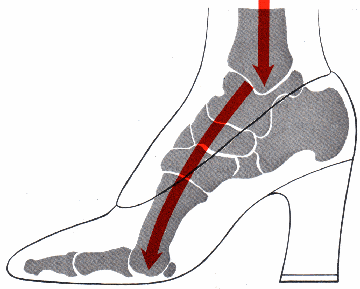
For most of you in Stage 2 or greater, you should buy flat shoes with a wide front area called the “toe box.” This means you may now need a wider shoe and perhaps even a longer shoe than two years ago as your foot has changed. This calls for a re-measurement of your foot.
Flat shoes help bunions but high heels help plantar fasciitis. If you have both bunions and plantar fasciitis, stick with flat shoes do the exercises in the link below, as well as the exercises in this article.
See Also: Plantar Fasciitis Exercises To Help Your Foot
Splints
Splints are not helpful according to the research.
Toe Separators
For those with stage 3 or 4 bunions, these separators can help with irritation and help make your feet more comfortable.
In summary to treat your bunion:
- Loosen up your adductor hallucis (the muscle between your toes that pulls your big toe toward your other toes)
- Strengthen your adductor hallucis (the muscle that pulls your muscle away from your other toes)
- Get custom orthotics if you are in stage 2 or beyond
- Walk more towards the outside of your feet. This takes the pressure off your big toe onto the other toes. Should only be done if you have painful bunions.
- Strengthen your arches by standing on the three points of the foot
- Strengthen your arches by doing heel raises
- Go barefoot at home if you are in stage 1 or better you don’t have a bunion.
I have found these methods helpful for most of my patients at our Toronto chiropractic clinic. However according to the Cochrane Reviews[3], a group dedicated to reviewing research and grading it has found that conservative treatment doesn’t help bunions. This doesn’t mean that certain specific procedures can’t help but at this time nothing has been proven.
Tell us what you think in the comments below and like us on Facebook. This Toronto Downtown Chiropractor will answer all questions in the comments section. If you comment below, I will do the absolute best I possibly can. Also, let me know who you think is the best Toronto Chiropractor in the comments below.
1. The top 3 Ways Wearing Shoes Harms Our Feet and What We Can do About it.
http://bit.ly/d0McWi
2. J Bone Joint Surg Br. 1992 Jul;74(4):525-7.
The influence of footwear on the prevalence of flat foot. A survey of 2300 children.
3. http://www.cochrane.org/cochrane-reviews


